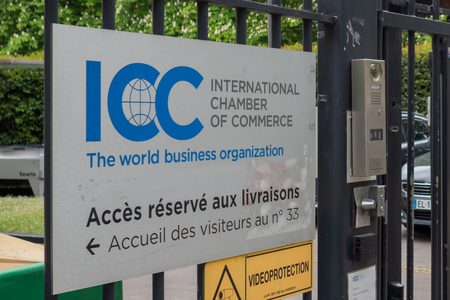Market participants in the UK and EU are bracing for a period of operational and regulatory change, as the transition to faster securities settlement in the US rapidly approaches, and both jurisdictions fire the starting gun on their own moves to T+1. The shortening of the US, Canada and Mexico securities settlement cycles to T+1 on 28, May 2024 will require all post-trade steps in affected securities, including settlement, to be completed by the end of the first business day after the trade date (known as T+1). Currently, affected trades must settle by the end of the second business day after the trade date (known as T+2).
This switch will have a significant impact on UK and EU firms and funds that have holdings in affected US, Canadian and/or Mexican securities as they will have even less time to acquire settlement currencies and take other steps to meet their settlement obligations. The UK and the EU have also indicated that it is a matter of when, not if, for both jurisdictions to switch to T+1 settlement. However, there is considerable uncertainty as to the timing and whether the UK and EU will look to co-ordinate their switch to minimize market disruption or move quickly to reduce the period of misalignment with the US. As a result, market participants based in the UK and EU face a unique set of challenges.
Background
On May 28, 2024, the standard settlement cycle for most broker-dealer transactions in US securities will shorten from T+2 to T+1. The products in scope of the changes to the settlement cycle include equities, corporate and municipal bonds, unit investment trusts, and financial instruments comprised of these security types. Financial instruments that settle at the discretion of the distributor and have extended or shortened settlement periods in the current settlement environment will not be impacted by T+1 implementation.
The US’s existing T+2 rules have been in place since 2017 (the equivalent rules in the UK and the EU have been in place since 2014) and are part of the established framework of market infrastructure in the international securities markets. The shortening of the cycle in one market therefore has significant implications for all markets.
Key Considerations
Foreign Exchange (FX)
Ensuring sufficient FX funding is in place to settle trades in other jurisdictions is an important aspect of the settlement process for market participants based in the UK and Europe who deal in US equities. T+1 settlement will pose several challenges in this respect:
- By compressing the time window for executing and instructing FX trades to match the settlement date of the relevant US securities, T+1 may create spikes in demand and volatility in pricing for certain currency pairs, especially around the time of the close of US markets. This is because firms that would previously have longer to obtain FX funding will have to trade in a compressed time window, increasing competition for liquidity.
- This also has the effect of reducing the number of trades going through CLS Settlement (CLS), the main settlement platform mitigating principal risk in settlement of FX transactions. CLS requires instructions to be submitted by 12 AM CET for next-day settlement. Given that EU- and UK-based firms typically access CLS through their custodians, they will need to execute and instruct their FX trades before the custodian cut-off, usually around 10 PM CET.
- However, many US equity fills may only arrive shortly before or after the US market close at 4 PM EST (9 PM GMT), leaving little or no time for FX trading and instruction on trade date. With more FX transactions being settled bilaterally (rather than on a net basis through CLS), this may have the effect of increasing liquidity and FX risk for affected counterparties.
Market participants may need to:
- trade FX earlier based on unmatched or pre-filled security trades;
- relocate FX functions to the US or use an outsourcing provider that can execute and instruct FX trades between the US market close and the CLS cut-off (taking advantage of the liquidity and pricing available in the US time zone);
- explore extending the settlement cycle of the underlying securities with their brokers; and/or
- use alternative FX settlement methods, such as bilateral gross settlement or same-day settlement, for currencies that cannot be settled through CLS on trade date.
All options are likely to be unattractive to a greater or lesser extent from an economic perspective, and any increased costs will inevitably be passed on to end investors.
Trade matching – Market and product misalignment
Trade matching, which involves the allocation, confirmation and affirmation of trade details between counterparties, may face various challenges and constraints due to the shortened settlement cycle:
- Certain market participants may not have sufficient operational capacity or resources to invest in the infrastructure required to process trades in different regions or time zones, especially for non-US or cross-border transactions. Smaller and midsized companies may struggle to reallocate resources to different time zones. As a result, they may need to resort to shift work patterns to meet their T+1 requirements.
- Funds that invest in a global basket of underlying securities face potential settlement mismatches due to differing security lifecycles across markets. For example, if a fund settles on a T+3 basis, but the underlying securities settle on a T+1 basis, then the fund may have a cash flow issue, as it will not necessarily have the funds from end investors available to settle trades in underlying securities.
- Markets may have misaligned settlement cycles or deadlines for different products or venues, creating complexities and inefficiencies for multi-listed or global securities. This could result in cash flow mismatches, funding gaps, liquidity risks, overdraft fees, CASS issues, performance drag or operational complexity for fund managers, service providers and investors.
- Communication methods or platforms may not currently support straight-through processing or pre-advice messages, resulting in manual interventions or bottlenecks. It is increasingly clear that the move to T+1 will require significant investment in automation by market participants.
To circumvent the issues arising from such misalignment, market participants could seek to:
- engage with custodians, brokers, vendors and other stakeholders to understand their deadlines, capabilities and readiness for T+1 settlement and trade matching;
- consider alternative or enhanced methods of trade matching; and/or
- send and receive pre-advice messages or recall notices as early as possible to facilitate timely trade matching and settlement, especially for securities lending or collateral transactions.
Market Feedback
Developments in the EU are being guided by the European Securities and Markets Authority (ESMA), which released a feedback statement (the Feedback Statement) on March 21, 2024 summarizing feedback received in relation to its consultation on the shortening of the settlement cycle in the EU. In the UK, on March 28, 2024, the Accelerated Settlement Taskforce (the AST) released its report (the Report) addressing the same issues from a UK perspective.
Under the EU Central Securities Depositories Regulation (CSDR), all transactions in transferable securities and certain other similar instruments which are executed on a trading venue must complete by no later than the second business day after the trade date (i.e. on T+2).
The underlying message received from respondents in both the ESMA Feedback Statement and the AST’s Report was that, although T+1 is technically possible (and already happens in relation to certain financial instruments and transactions), mandating a harmonized shift from T+2 to T+1 in the EU and the UK will have considerable (and some feedback suggests, negative) operational impacts.
ESMA’s preliminary view is that an eventual transition to T+1 could take place no earlier than 32 months (just under 3 years) from the date industry is informed that the change needs to happen. The AST has been more definitive in this regard, concluding that the date for the UK move to T+1 should be no later than 31st December 2027. The AST has recommended that a technical group be established to choose the exact date for the transition, in collaboration with industry.
Commentary
Reading between the lines, it seems there is still resistance and hesitancy towards a mandate for T+1 in the EU, due in large part to the unique and fragmented nature of the EU capital market. The AST Report suggests that UK market participants are more worried about being left behind other markets, and focuses on the need for the UK to press ahead regardless of the EU’s timetable.
The associated alignment issues are not insignificant. For example, if the UK and/or the EU are on a different settlement cycle to the US they risk an extended period of increased costs and inefficiencies, which will damage their competitiveness vis-à-vis the US. When the EU and the UK decide to make the shift, there will be a significant amount of work for sell- and buy-side firms to prepare, and all bodies involved will need to ensure that there is sufficient lead time and sufficient clarity about the impact on other regulatory requirements.
Co-authored by Tom Callaby is a financial services partner and Daniel Lederman is an associate in the Financial Services Regulatory team at CMS UK.














